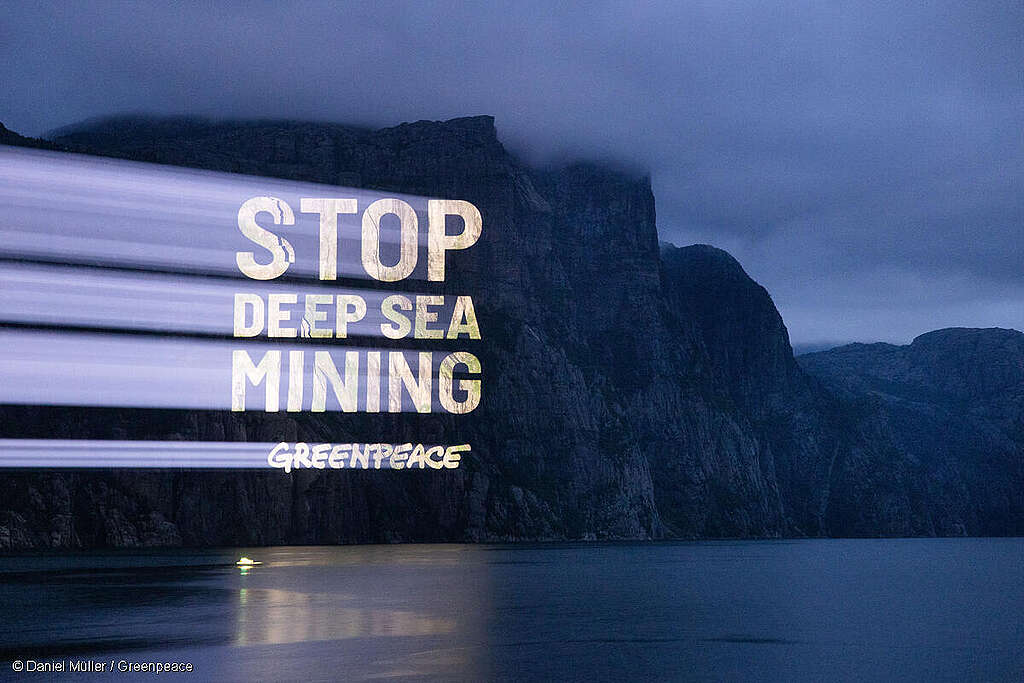
PETITION: Stop Deep Sea Mining
An emerging new industry could destroy this fragile and unique deep sea environment before we truly understand its importance.

By Katie Singer https://katiesinger.substack.com/p/bess-fire-hazards
On Friday, August 30, Applied Energy Services Corporation (AES), a global utility and power generation company, submitted a proposal to Santa Fe, New Mexico county commissioners to build a 700-acre solar facility with a battery energy storage system (BESS).
On September 5th, a thermal runaway fire started at the AES-built SDG&E (San Diego Gas and Electric) Battery Storage Facility in Escondido, California. (With a thermal runaway fire, excessive heat causes a chemical reaction that spreads to other batteries.) Authorities issued a mandatory evacuation order for the immediate area, and a “shelter in place” order for areas as far as over a mile away from the fire. (To shelter in place, people must go indoors, shut doors and windows, and “self-sustain” until emergency personnel provide additional direction.) Schools up to three miles away from the fire were evacuated Thursday and canceled for Friday. 500 businesses closed.
As of this morning, Saturday, September 7th, officials have not yet lifted orders to evacuate and shelter in place.
On social media, people have reported smelling “burning plastic” inside their homes (despite windows being closed) and feeling ill.
People from Oceanside to Encinitas encountered a strong chemical smell starting around 5 pm Friday, the 6th. Around 8:30 pm, San Diego County Air Pollution Control District officials said that this smell was not related to the BESS fire in Escondido. Due to the odors’ fleeting nature, they were unable to identify its source.
This is the 3rd AES BESS thermal runaway fire in five years. Officials predict that it could take up to 48 hours to extinguish.
A May 2024 battery fire in Otay Mesa, California kept firefighters on the scene for nearly 17 days. They sprayed eight million gallons of water on the site. The county’s hazmat team tested water runoff and smoke and reported no toxic or dangerous levels. (Is the keyword in this last sentence “reported?”)
For a list of battery energy storage “failure incidents,” see Electric Power Research Institute’s database. Globally, 63 utility and industrial-scale battery energy storage systems endured failure events from 2011 to 2023. After South Korea, the U.S. has experienced the most major battery energy storage-related fires, with California (six, with this Escondido fire) and New York (four) reporting the most incidents.
Back in Santa Fe County, petitioners emailed and hand-delivered a request to county commissioners on July 23 and August 23 to enact a moratorium on AES’s solar facility and battery energy storage system. Commissioners did not review these petitions before AES submitted its application on August 30th. A moratorium cannot apply to a pending application.
AES’s Escondido Battery Energy Storage facility has 24 BESS battery containers. The corporation plans to install 38 battery containers at its Rancho Viejo BESS facility.
For updates, visit New Mexicans for Responsible Renewable Energy.
Please also read my September 5th post, 21 questions for solar PV explorers, and check out Shauna and Harlie Rankin’s video, “Government announces 31 million acre land grab from U.S. ranchers (for solar and wind facilities).” It explains that federal officials and corporations have joined forces to install “renewable power” corridors—five miles wide, 70 miles long, and larger—around the U.S. by 2030. These corridors will cover farm and ranchland with solar and wind facilities.
I also highly recommend Calvin L. Martin’s August 2019 report, “BESS Bombs: The huge explosive toxic batteries the wind & solar companies are sneaking into your backyard.” Part 1 and Part 2. I recommend reading this report even though powers-that-be removed its videos.
According to basic engineering principles, no technology is safe until proven safe. Will legislators continue to dedicate billions of dollars to subsidizing solar power, wind power, battery storage and EVs? Will commissioners and regulators say, “We have to expect some thermal runaway fires in order to mitigate climate change threats?” Or, will they build safety features into BESS like this firefighter suggests? Will they protect the public and insist on certified reports from liability-carrying professional engineers that all hazards have been mitigated before they permit new facilities and new battery storage systems?

Editor’s note: Protecting the ocean means life protection, our ecosystems depend on intact and clean oceans. Even though the aim is to protect 30% of the planet, it’s not clear what conservation actually means worldwide. That leads to ineffective conservation measures and demands more knowledge about oceanic ecosystems and also implementing it. For the most part protected areas don’t need to be managed, they just need to have humans leave them alone.
There’s never been more momentum for protecting the ocean, but new research finds that many efforts fail to protect endangered species — or have barely gotten off the drawing board.
Ocean ecosystems and the marine wildlife that depend on them are under threat as never before. Between overfishing, climate change, plastic pollution, and habitat destruction, it’s a bad time to be a prawn, cod, seabird, or whale.
There’s no single silver bullet solution to the biodiversity crisis, but in recent years, many people in the environmental community have focused on the goal of “30 x 30”: protecting 30% of the planet by the year 2030. Many nations have made promises toward that goal, including the United States, which has adapted it into the “America the Beautiful” initiative.
Measurable goals like this provide nations with clear, quantifiable conservation goals that others in the international community can follow, verify, or use to identify shortfalls and push for more action.
At the same time, many experts warn that number-based targets like “protect 30%” lend themselves to incentives to arguably-kinda-sorta protect as much as possible, rather than protecting the most ecologically important areas. Governments, for instance, can use what’s euphemistically referred to as “creative accounting” — counting things as protected that probably should not be considered protected.
Two new research papers examine some of this creative accounting in the ocean. Together, they stress important things to keep in mind when creating protected areas and when assessing their usefulness.
A surprisingly common issue in area-based conservation happens when a government declares a new protected area to help save a threatened species of concern…without first checking to see if the species actually lives within those boundaries.
It happens more often than you might think. A new study published in the Journal of Animal Ecology looked at 89 marine protected areas in Europe that are supposed to protect diadromous fish species (those that migrate between ocean and fresh water, like salmon or some eels) of conservation concern.
Their findings are shocking: Many of these areas protect habitats where those fish species do not live, and very few of them protect the most important core habitat for any diadromous fish species.
“A marine protected area should be an area that protects part of the marine environment,” says Sophie Elliott of the Wildlife Conservation Trust, the study’s lead author. “I say ‘should’ because there are a lot of parks that don’t have enough thought put into them. Quite often things are done quickly without thinking or understanding the situation.”
Sometimes this happens because of limited resources for scientific study. In other words, according to Elliot, we simply don’t know enough about species’ habitat use to protect their key habitat, at least not yet. This is known as the rare-species paradox: Endangered species are often hard to find and study, especially in the vast ocean, so it can be hard to understand what habitat qualities they need to thrive, even if we can hypothesize that protecting certain regions will mitigate some of the threats the species face.
Other times government officials, in search of positive publicity, announce a new protected area that was studied but wasn’t intended to protect a species.
“We had a series of MPAs that were supposed to have measures in place to protect certain species,” Elliott says. “But then an extra species got tacked on to the stated goals of the MPA, and it wasn’t effective for that species.” She declined to identify examples, given the political sensitivities of some of these protected areas.
In addition to gathering more data and always basing protected-area design on the best available data, Elliott recommends a more holistic approach to designating future protected areas.
“When people think about putting MPAs in place, look at the whole range of biodiversity that exists within it, because there might be many endangered and protected species,” she says. “You need to know what’s in that MPA and do ecosystem-based management” — management focusing on the whole ecosystem and not just individual species. It’s the difference between protecting cod by establishing fishing quotas versus protecting cod by also managing their habitat and predators and food and other things that eat that food. “We’ve long been calling for that, but we aren’t really working toward it at all,” she says.
Another key issue in marine protected area management is what should count as “protected.”
Some areas restrict oil and gas extraction but allow any and all fishing. Some allow swimmers and other recreation, while others say people can’t even go scuba diving.
In one glaring recent example, the advocacy group Oceana U.K. found evidence that the United Kingdom allows bottom trawling in many of its MPAs. Bottom trawling is a fishing method that’s extremely destructive to sensitive habitat types; it’s been compared to clear-cutting forests to catch rabbits.
“At the end of the day … there’s no one clear definition of what conservation means around the world,” says Angelo Villagomez, a senior fellow at the Center for American Progress who has studied the issue. “One of the negative externalities of the global push to protect 30% of the ocean is that some governments are more concerned with being able to say that they protected 30% of the ocean than they are concerned with delivering meaningful biodiversity protections.”
Villagomez and his colleagues have identified another big issue: According to their new analysis in the journal Conservation Letters, fully one-quarter of the 100 largest marine protected areas — as cataloged in the United Nations and IUCN’s world database of protected areas — are announced but not yet implemented. Many have no clear timeline of when the formal protections might be put into place, or what those regulations might look like.
For now, those areas exist on paper but remain unprotected in the real world. For example, the paper cites the OSPAR MPA network covering 7% of the Northeast Atlantic, which currently appears to have no concrete protections.
This wide range of rules and inconsistent protections makes it harder to protect the ocean — or to count it toward 30×30 goals.
Governments are not supposed to submit anything to the world database of protected areas until something is designated, “but they do, and that’s just the reality,” says Villagomez.
But here’s the biggest problem: The study found that many of the world’s largest MPAs lack the scientific knowledge, funding, and political support to be effective.
“We know that MPAs work when they are well designed and provided the funding to operate,” Villagomez told me. “But for about one-third of the MPAs we studied, based on everything we know about protected area science, they will never result in positive outcomes for biodiversity.”
The conclusions of these two papers are clear: Too many marine protected areas are poorly designed and sited in places where the species they’re ostensibly trying to protect do not actually live. Also, too many allow destructive extractive industries to operate, limiting the benefits of any protection.
Despite these setbacks, Villagomez remains optimistic about the future of MPA-based protections.
“The good news is that this works really well about one-third of the time — if you play baseball and you hit the ball 300 out of 1,000 times, you’re going to the Hall of Fame,” he says. “There’s a ton of science that shows that well-designed well-implemented MPAs work, and for one-quarter of the MPAS we looked at, they’re well designed and are just lacking funding for implementation.”

Editor’s note: We know what needs to be done but will it be done? No, the system will not allow it so the system must go. The sooner the better. Join a social movement advocating for a real energy transition, one that strives to guarantee that civilization will not emerge from this century.
By Richard Heinberg Aug 25 for Common Dreams
Humanity’s transition from relying overwhelmingly on fossil fuels to instead using alternative low-carbon energy sources is sometimes said to be unstoppable and exponential. A boosterish attitude on the part of many renewable energy advocates is understandable: overcoming people’s climate despair and sowing confidence could help muster the needed groundswell of motivation to end our collective fossil fuel dependency. But occasionally a reality check is in order.
The reality is that energy transitions are a big deal, and they typically take centuries to unfold. Historically, they’ve been transformative for societies—whether we’re speaking of humanity’s taming of fire hundreds of thousands of years ago, the agricultural revolution 10,000 years ago, or our adoption of fossil fuels starting roughly 200 years ago. Given (1) the current size of the human population (there are eight times as many of us alive today as there were in 1820 when the fossil fuel energy transition was getting underway), (2) the vast scale of the global economy, and (3) the unprecedented speed with which the transition will have to be made in order to avert catastrophic climate change, a rapid renewable energy transition is easily the most ambitious enterprise our species has ever undertaken.
As we’ll see, the evidence shows that the transition is still in its earliest stages, and at the current rate, it will fail to avert a climate catastrophe in which an unimaginable number of people will either die or be forced to migrate, with most ecosystems transformed beyond recognition.
Implementing these seven steps will change everything. The result will be a world that’s less crowded, one where nature is recovering rather than retreating, and one in which people are healthier (because they’re not soaked in pollution) and happier.
We’ll unpack the reasons why the transition is currently such an uphill slog. Then, crucially, we’ll explore what a real energy transition would look like, and how to make it happen.
Despite trillions of dollars having been spent on renewable energy infrastructure, carbon emissions are still increasing, not decreasing, and the share of world energy coming from fossil fuels is only slightly less today than it was 20 years ago. In 2024, the world is using more oil, coal, and natural gas than it did in 2023.
While the U.S. and many European nations have seen a declining share of their electricity production coming from coal, the continuing global growth in fossil fuel usage and CO2 emissions overshadows any cause for celebration.
Why is the rapid deployment of renewable energy not resulting in declining fossil fuel usage? The main culprit is economic growth, which consumes more energy and materials. So far, the amount of annual growth in the world’s energy usage has exceeded the amount of energy added each year from new solar panels and wind turbines. Fossil fuels have supplied the difference.
So, for the time being at least, we are not experiencing a real energy transition. All that humanity is doing is adding energy from renewable sources to the growing amount of energy it derives from fossil fuels. The much-touted energy transition could, if somewhat cynically, be described as just an aspirational grail.
How long would it take for humanity to fully replace fossil fuels with renewable energy sources, accounting for both the current growth trajectory of solar and wind power and also the continued expansion of the global economy at the recent rate of 3 percent per year? Economic models suggest the world could obtain most of its electricity from renewables by 2060 (though many nations are not on a path to reach even this modest marker). However, electricity represents only about 20 percent of the world’s final energy usage; transitioning the other 80 percent of energy usage would take longer—likely many decades.
However, to avert catastrophic climate change, the global scientific community says we need to achieve net-zero carbon emissions by 2050—i.e., in just 25 years. Since it seems physically impossible to get all of our energy from renewables that soon while still growing the economy at recent rates, the IPCC (the international agency tasked with studying climate change and its possible remedies) assumes that humanity will somehow adopt carbon capture and sequestration technologies at scale—including technologies that have been shown not to work—even though there is no existing way of paying for this vast industrial build-out. This wishful thinking on the part of the IPCC is surely proof that the energy transition is not happening at sufficient speed.
Why isn’t it? One reason is that governments, businesses, and an awful lot of regular folks are clinging to an unrealistic goal for the transition. Another reason is that there is insufficient tactical and strategic global management of the overall effort. We’ll address these problems separately, and in the process uncover what it would take to nurture a true energy transition.
At the heart of most discussions about the energy transition lie two enormous assumptions: that the transition will leave us with a global industrial economy similar to today’s in terms of its scale and services, and that this future renewable-energy economy will continue to grow, as the fossil-fueled economy has done in recent decades. But both of these assumptions are unrealistic. They flow from a largely unstated goal: we want the energy transition to be completely painless, with no sacrifice of profit or convenience. That goal is understandable since it would presumably be easier to enlist the public, governments, and businesses in an enormous new task if no cost is incurred (though the history of overwhelming societal effort and sacrifice during wartime might lead us to question that presumption).
But the energy transition will undoubtedly entail costs. Aside from tens of trillions of dollars in required monetary investment, the energy transition will itself require energy—lots of it. It will take energy to build solar panels, wind turbines, heat pumps, electric vehicles, electric farm machinery, zero-carbon aircraft, batteries, and the rest of the vast panoply of devices that would be required to operate an electrified global industrial economy at current scale.
In the early stages of the transition, most of that energy for building new low-carbon infrastructure will have to come from fossil fuels, since those fuels still supply over 80 percent of world energy (bootstrapping the transition—using only renewable energy to build transition-related machinery—would take far too long). So, the transition itself, especially if undertaken quickly, will entail a large pulse of carbon emissions. Teams of scientists have been seeking to estimate the size of that pulse; one group suggests that transition-related emissions will be substantial, ranging from 70 to 395 billion metric tons of CO2 “with a cross-scenario average of 195 GtCO2”—the equivalent of more than five years’ worth of global carbon CO2 emissions at current rates. The only ways to minimize these transition-related emissions would be, first, to aim to build a substantially smaller global energy system than the one we are trying to replace; and second, to significantly reduce energy usage for non-transition-related purposes—including transportation and manufacturing, cornerstones of our current economy—during the transition.
In addition to energy, the transition will require materials. While our current fossil-fuel energy regime extracts billions of tons of coal, oil, and gas, plus much smaller amounts of iron, bauxite, and other ores for making drills, pipelines, pumps, and other related equipment, the construction of renewable energy infrastructure at commensurate scale would require far larger quantities of non-fuel raw materials—including copper, iron, aluminum, lithium, iridium, gallium, sand, and rare earth elements.
While some estimates suggest that global reserves of these elements are sufficient for the initial build-out of renewable-energy infrastructure at scale, there are still two big challenges. First: obtaining these materials will require greatly expanding extractive industries along with their supply chains. These industries are inherently polluting, and they inevitably degrade land. For example, to produce one ton of copper ore, over 125 tons of rock and soil must be displaced. The rock-to-metal ratio is even worse for some other ores. Mining operations often take place on Indigenous peoples’ lands and the tailings from those operations often pollute rivers and streams. Non-human species and communities in the global South are already traumatized by land degradation and toxification; greatly expanding resource extraction—including deep-sea mining—would only deepen and multiply the wounds.
The second materials challenge: renewable energy infrastructure will have to be replaced periodically—every 25 to 50 years. Even if Earth’s minerals are sufficient for the first full-scale build-out of panels, turbines, and batteries, will limited mineral abundance permit continual replacements? Transition advocates say that we can avoid depleting the planet’s ores by recycling minerals and metals after constructing the first iteration of solar-and-wind technology. However, recycling is never complete, with some materials degraded in the process. One analysis suggests recycling would only buy a couple of centuries worth of time before depletion would bring an end to the regime of replaceable renewable-energy machines—and that’s assuming a widespread, coordinated implementation of recycling on an unprecedented scale. Again, the only real long-term solution is to aim for a much smaller global energy system.
The transition of society from fossil fuel dependency to reliance on low-carbon energy sources will be impossible to achieve without also reducing overall energy usage substantially and maintaining this lower rate of energy usage indefinitely. This transition isn’t just about building lots of solar panels, wind turbines, and batteries. It is about organizing society differently so that it uses much less energy and gets whatever energy it uses from sources that can be sustained over the long run.
Step one: Cap global fossil fuel extraction through global treaty, and annually lower the cap. We will not reduce carbon emissions until we reduce fossil fuel usage—it’s just that simple. Rather than trying to do this by adding renewable energy (which so far hasn’t resulted in a lessening of emissions), it makes far more sense simply to limit fossil fuel extraction. I wrote up the basics of a treaty along these lines several years ago in my book, The Oil Depletion Protocol.
Step two: Manage energy demand fairly. Reducing fossil fuel extraction presents a problem. Where will we get the energy required for transition purposes? Realistically, it can only be obtained by repurposing energy we’re currently using for non-transition purposes. That means most people, especially in highly industrialized countries, would have to use significantly less energy, both directly and also indirectly (in terms of energy embedded in products, and in services provided by society, such as road building). To accomplish this with the minimum of societal stress will require a social means of managing energy demand.
The fairest and most direct way to manage energy demand is via quota rationing. Tradable Energy Quotas (TEQs) is a system designed two decades ago by British economist David Fleming; it rewards energy savers and gently punishes energy guzzlers while ensuring that everyone gets energy they actually need. Every adult would be given an equal free entitlement of TEQ units each week. If you use less than your entitlement of units, you can sell your surplus. If you need more, you can buy them. All trading takes place at a single national price, which will rise and fall in line with demand.
Step three: Manage the public’s material expectations. Persuading people to accept using less energy will be hard if everyone still wants to use more. Therefore, it will be necessary to manage the public’s expectations. This may sound technocratic and scary, but in fact, society has already been managing the public’s expectations for over a century via advertising—which constantly delivers messages encouraging everyone to consume as much as they can. Now we need different messages to set different expectations.
What’s our objective in life? Is it to have as much stuff as possible, or to be happy and secure? Our current economic system assumes the former, and we have instituted an economic goal (constant growth) and an indicator (gross domestic product, or GDP) to help us achieve that goal. But ever-more people using ever-more stuff and energy leads to increased rates of depletion, pollution, and degradation, thereby imperiling the survival of humanity and the rest of the biosphere. In addition, the goal of happiness and security is more in line with cultural traditions and human psychology. If happiness and security are to be our goals, we should adopt indicators that help us achieve them. Instead of GDP, which simply measures the amount of money changing hands in a country annually, we should measure societal success by monitoring human well-being. The tiny country of Bhutan has been doing this for decades with its Gross National Happiness (GNH) indicator, which it has offered as a model for the rest of the world.
Step four: Aim for population decline. If population is always growing while available energy is capped, that means ever-less energy will be available per capita. Even if societies ditch GDP and adopt GNH, the prospect of continually declining energy availability will present adaptive challenges. How can energy scarcity impacts be minimized? The obvious solution: welcome population decline and plan accordingly.
Global population will start to decline sometime during this century. Fertility rates are falling worldwide, and China, Japan, Germany, and many other nations are already seeing population shrinkage. Rather than viewing this as a problem, we should see it as an opportunity. With fewer people, energy decline will be less of a burden on a per capita basis. There are also side benefits: a smaller population puts less pressure on wild nature, and often results in rising wages. We should stop pushing a pro-natalist agenda; ensure that women have the educational opportunities, social standing, security, and access to birth control to make their own childbearing choices; incentivize small families, and aim for the long-term goal of a stable global population closer to the number of people who were alive at the start of the fossil-fuel revolution (even though voluntary population shrinkage will be too slow to help us much in reaching immediate emissions reduction targets).
Step five: Target technological research and development to the transition. Today the main test of any new technology is simply its profitability. However, the transition will require new technologies to meet an entirely different set of criteria, including low-energy operation and minimization of exotic and toxic materials. Fortunately, there is already a subculture of engineers developing low-energy and intermediate technologies that could help run a right-sized circular economy.
Step six: Institute technological triage. Many of our existing technologies don’t meet these new criteria. So, during the transition, we will be letting go of familiar but ultimately destructive and unsustainable machines.
Some energy-guzzling machines—such as gasoline-powered leaf blowers—will be easy to say goodbye to. Commercial aircraft will be harder. Artificial intelligence is an energy guzzler we managed to live without until very recently; perhaps it’s best if we bid it a quick farewell. Cruise ships? Easy: downsize them, replace their engines with sails, and expect to take just one grand voyage during your lifetime. Weapons industries offer plenty of examples of machines we could live without. Of course, giving up some of our labor-saving devices will require us to learn useful skills—which could end up providing us with more exercise. For guidance along these lines, consult the rich literature of technology criticism.
Step seven: Help nature absorb excess carbon. The IPCC is right: if we’re to avert catastrophic climate change we need to capture carbon from the air and sequester it for a long time. But not with machines. Nature already removes and stores enormous amounts of carbon; we just need to help it do more (rather than reducing its carbon-capturing capabilities, which is what humanity is doing now). Reform agriculture to build soil rather than destroy it. Restore ecosystems, including grasslands, wetlands, forests, and coral reefs.
Implementing these seven steps will change everything. The result will be a world that’s less crowded, one where nature is recovering rather than retreating, and one in which people are healthier (because they’re not soaked in pollution) and happier.
Granted, this seven-step program appears politically unachievable today. But that’s largely because humanity hasn’t yet fully faced the failure of our current path of prioritizing immediate profits and comfort above long-term survival—and the consequences of that failure. Given better knowledge of where we’re currently headed, and the alternatives, what is politically impossible today could quickly become inevitable.
Social philosopher Roman Krznaric writes that profound social transformations are often tied to wars, natural disasters, or revolutions. But crisis alone is not positively transformative. There must also be ideas available for different ways to organize society, and social movements energized by those ideas. We have a crisis and (as we have just seen) some good ideas for how to do things differently. Now we need a movement.
Building a movement takes political and social organizing skills, time, and hard work. Even if you don’t have the skills for organizing, you can help the cause by learning what a real energy transition requires and then educating the people you know; by advocating for degrowth or related policies; and by reducing your own energy and materials consumption. Calculate your ecological footprint and shrink it over time, using goals and strategies, and tell your family and friends what you are doing and why.
Even with a new social movement advocating for a real energy transition, there is no guarantee that civilization will emerge from this century of unraveling in a recognizable form. But we all need to understand: this is a fight for survival in which cooperation and sacrifice are required, just as in total war. Until we feel that level of shared urgency, there will be no real energy transition and little prospect for a desirable human future.
Photo by American Public Power Association on Unsplash
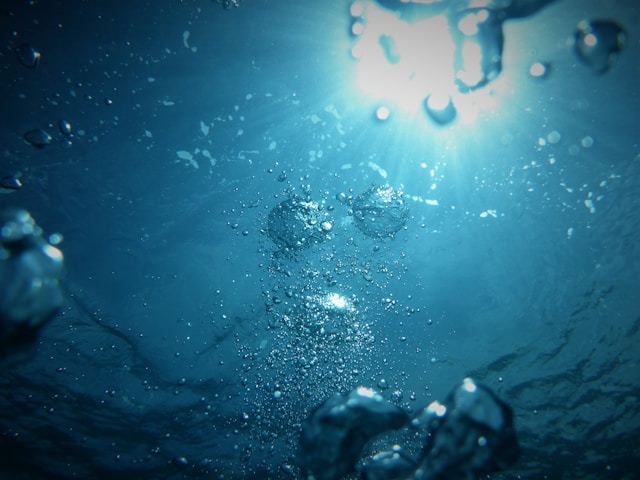
Nick Young 26 July 2024 / Greenpeace Scientists have found a source of ‘dark oxygen’ 4,000 meters below the surface of the Pacific in the target zone for deep sea mining. The discovery could have far-reaching implications for science and the wannabe deep sea mining industry. It’s often said that we know more about the surface of the moon than we do about the deep ocean. This new discovery of dark oxygen shows how true that is, and underlines the need to stop a new deep sea mining industry from targeting its source.
What scientists mean by ‘dark oxygen’ is that – in the total darkness of the very deep ocean – around 4,000 meters below the surface of the Pacific Ocean – oxygen is being produced – in the dark.
It’s previously been thought that oxygen on Earth is produced on land and at the surface of the ocean, where sunlight makes plant photosynthesis possible.
Plants on land are the biggest producers of oxygen, but marine algae and phytoplankton also produce it. These microscopic organisms perform photosynthesis in the ocean, which covers about 70% of the Earth’s surface.
Blue-green algae – or cyanobacteria – are some of the oldest organisms on Earth and can also produce oxygen. They were among the first to do so through photosynthesis, and they also need sunlight.
The common factor in oxygen production is sunlight – until this discovery of dark oxygen showed that oxygen is also being produced in another way in the deep dark sea.
The dark oxygen discovery is being hailed as a groundbreaking scientific discovery, but it also has other implications.
Nick Owens, the director of the Scottish Association for Marine Science (SAMS) says: “The fact that we’ve got another source of oxygen on the planet other than photosynthesis has consequences and implications that are utterly profound.”
Andrew Sweetman, who was one of the SAMS scientists involved in the research, says in a video: “This research potentially sheds light on where life began on the planet. This discovery has shown that, well, maybe there was another source of oxygen a long time ago and aerobic life or life that breathes oxygen could have persisted before the rise of photosynthesis — and if it’s happening on our planet could it be happening on other planets too?”
But as well as those wider implications, the discovery has significant and immediate implications for the controversial deep sea mining industry which somewhat ironically sponsored the science.
Here’s the thing. This dark oxygen, instead of being produced by plants and sunlight, is being produced by strange potato-shaped metallic lumps found on the deep sea floor.
It turns out that these lumps – otherwise known as ‘polymetallic nodules’ – give off almost as much electricity as AA batteries! By reacting with salt water, their electrical charge produces oxygen way down there on the seabed of the deep ocean through a process known as ‘seawater electrolysis’ which splits seawater into hydrogen and oxygen.
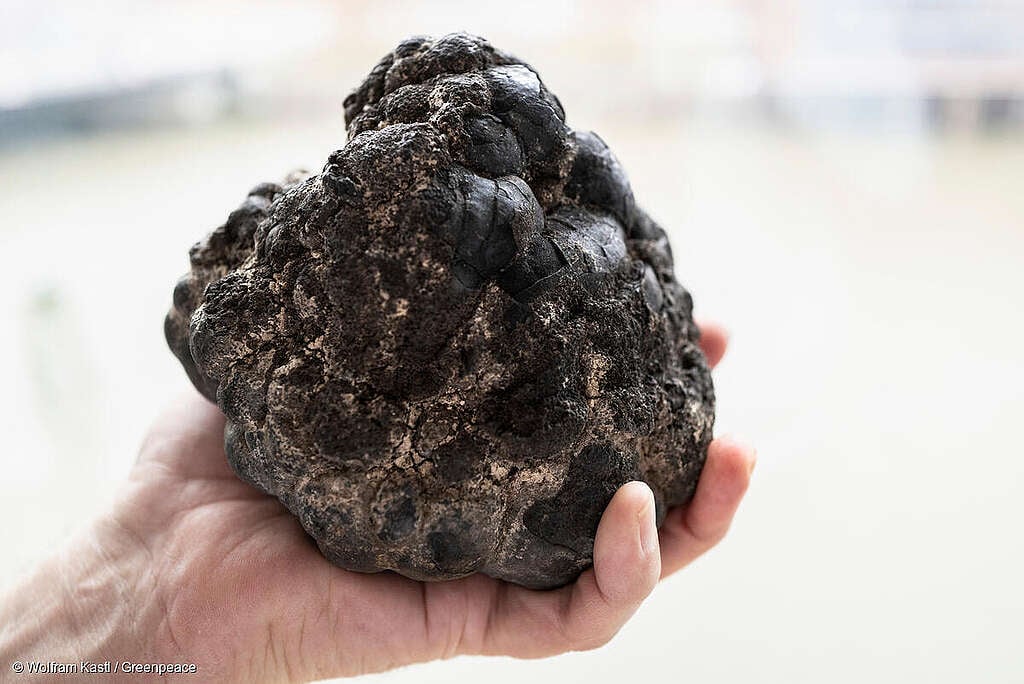
So, these little metallic lumps, which the wannabe deep sea miners have been metaphorically calling ‘batteries in a rock’ actually turned out to be just that – and they’re producing dark oxygen that could play a critical role in the deep ocean ecology.
The discovery of metallic nodules producing dark oxygen has been a huge surprise to science which could even require a new way of thinking about how life first began on planet Earth.
But it could also be the final straw in the case against deep sea mining. It could stop the industry before they begin.
The discovery was made in the Clarion-Clipperton Zone (CCZ), a huge flat area of the seafloor that stretches between Hawaii and Mexico, where mining companies like The Metals Company have plans to start harvesting these very same nodules that turn out to be producing all this dark oxygen.
These oxygen-producing nodules could be supporting a whole range of known and unknown deep sea lifeforms. Dark oxygen could be a critical factor in the deep sea ecosystem!
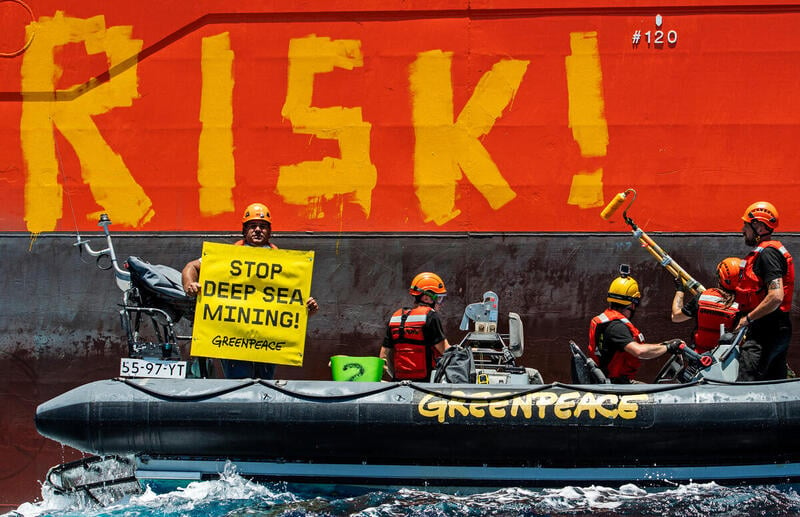
Greenpeace and others have long said that this new extractive mining industry should not be allowed to start in the very deep ocean because the life there is so little understood, and the ecosystems are fragile and potentially vital for the health of the ocean and all life on Earth.
This new discovery underlines the point.
The timing is good because world governments are meeting in Jamaica right now to decide the fate of this new mining industry. They’ll be deciding whether or not to allow deep sea miners like The Metals Company to go ahead with their plans to drop giant mining robots onto the seafloor to start harvesting these life-sustaining nodules.
Greenpeace is in Jamaica arguing strongly that deep sea mining should not be allowed to go ahead – especially now that we know the deep ocean is another source of oxygen that could be vital for the health of the ocean and all of us who depend on it.
In the climate and biodiversity crisis, we know that nature, in all its diversity, must be protected.

PETITION: Stop Deep Sea Mining
An emerging new industry could destroy this fragile and unique deep sea environment before we truly understand its importance.
Photo by Jong Marshes on Unsplash
For more information contact Deep Sea Defenders.
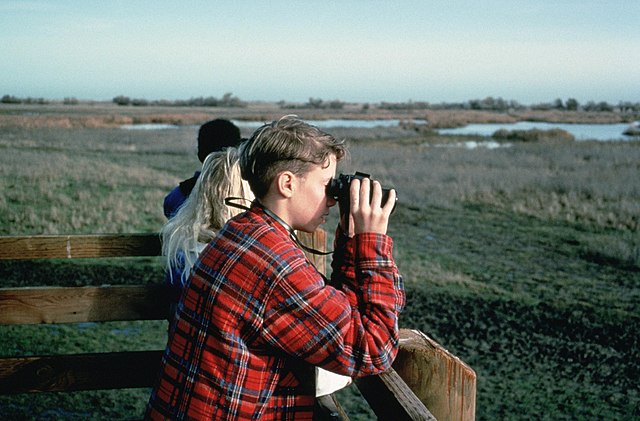
Editor’s note: Environmental activism will only play a role in the lives of young people if adults are great role models and walk the talk. As custodians, we need to take the young out into nature to help them gain an appreciation for wilderness. So that they will want to protect the earth in the future. At the same time, many teenagers lose their connection to the natural world, because the lifestyle of our sedentary, technology-focused culture doesn’t give them any incentive to connect. Instead of investing in research for techno-fixes, we should find out how people will care more deeply about the planet’s ecosystems.
By Keith Kozloff/Resilience.org
I used to think the top environmental problems were biodiversity loss, ecosystem collapse, and climate change. I thought that with 30 years of good science, we could address these problems, but I was wrong. The top environmental problems are selfishness, greed, and apathy, and to deal with those we need a spiritual and cultural transformation. And we scientists don’t know how to do that. – Gus Speth, Founder, World Resources Institute.
At the federal level, even recent Democratic administrations have proven unable to enact policy measures ambitious enough to bend the curve of carbon emissions (at least without “help” from COVID). Nor has technology been our salvation. Although they held promise to reduce the carbon intensity of our economic output, technological advances have been offset by Americans’ consumption habits, population growth, and the energy intensity of information-processing technologies.
With each passing year, the disconnect grows ever more stark between 1) the mounting scientific evidence that global climate disruption is happening now and 2) the inadequacy of collective action to control rising carbon emissions. We do not lack for effective solutions. Rather, society and its leaders lack sufficient will and caring about future generations to implement solutions that meet the challenge. Like it or not, we find ourselves in a long game with adverse climate and biodiversity impacts baked in for decades to come.
One resource that has not yet been adequately mobilized, however, is the innate human capacity for caring, compassion, and love. Compared to technology and policy innovations, little research attention has been devoted to what makes people care enough to adopt pro-nature attitudes and behaviors and to support environmental policy initiatives that affect their lifestyles.
At the same time, people are increasingly disconnected from the environment they are being asked to help protect. The physical and psychic disconnection is due in part to urbanization and sedentary lifestyles, exacerbated by the explosive increase in time spent interacting with the physical world through a small two-dimensional screen.
To combat what some call “nature deficit disorder,” parents, schools, nonprofits, and governments have long offered a wide range of nature-based experiences for young people. Some are structured, such as outdoor education programs, forest schools, green schoolyards, community clean-up and tree-planting projects, and scouting. Others are unstructured: climbing trees, foraging, hunting, and having pets. The Children and Nature Network (C&NN), a national nonprofit that tracks and supports childhood nature activities, has documented that such activities yield significant immediate psychological, physiological and emotional benefits to participants.
But do nature-based experiences also result in their young participants developing pro-environmental attitudes, behaviors, and activism in adulthood? Given currently adverse environmental trajectories, this is clearly a question with high stakes. To explore linkages between childhood nature activities and adult environmental activism, I reviewed recent research in this field on behalf of C&NN.
Findings suggest that instilling a love for the natural world in young people does offer hope for future generations becoming better ancestors than the present one. Early experiences in nature can lead to feelings of connectedness, which can then lead to pro-environmental attitudes, and ultimately pro-environmental behavior. Many studies suggest that nature experiences and connection to nature in childhood are vital to pro-environmental behaviors in adulthood.
The link between time in nature and connectedness to nature is often explored retrospectively by asking adults to recall their childhood nature experiences. Studies taking this approach have documented significant relationships between childhood nature experience and ecologically conscious behavior later in life. These findings underscore the importance of ample time in nature during childhood. However, there are nuances that suggest various factors may result in individual variation.
For example, early experiences that stimulate emotional responses to nature create a deeper bond than purely information-based experiences. Emotional bonds with nature offer a pathway for inspiring future environmental action in adulthood. While cognitive understanding and environmental knowledge may influence behaviors, investigations have established stronger connections between emotional feelings for nature and increased care for nature through pro-environmental behaviors. A program that brings inner-city teens from New York into the Adirondacks for both learning and hiking inspires some participants to pursue subsequent environmental education and careers.
Childhood nature experiences are not the only path to pro-environmental behavior in adulthood. For example, an urban environmental justice or climate justice advocate might have grown up in a household that placed a high value on social justice more generally.
Overall, despite a growing body of research, this field of study is not as robust as the above question demands. Significant research gaps and methodological deficiencies persist. Empirical evidence is stronger for correlative than for causal relationships.
The challenge facing both outdoor educators and environmental advocates may be less about designing initiatives to instill a newfound love for nature than about how to retain humans’ innate tendencies to do so. At an early age, children demonstrate compassion towards each other, other animal species, and even to non-living entities. Children come into the world with the capacity to experience curiosity, wonder, and (especially at an early age) a less sharp distinction between themselves and their surrounding world. At an early age, children demonstrate the capacity to develop moral relationships with both sentient and non-sentient nature. (My then three-year-old son befriended a chicken pinata at the start of a birthday party, a friendship that did not end well.)
Creating opportunities for exposure to nature may help nurture such instincts and prevent them from withering as kids develop to adulthood. Implications for adults may thus be to focus less on fostering connections with nature than on getting out of the way of children’s “natural” tendencies. Relatedly, connection to nature tends to drop off during the teen years, suggesting that nature experiences need to be designed and targeted to teens’ developmental stage.
The pathways by which children in Western societies feel connected with nature are often different than in indigenous societies. In place-based societies that depend on natural resources for their sustenance, survival depends on practices that evolve from long-term experience in responding to the natural world. Stewardship norms and behaviors become established in children through demonstrating traditional livelihoods in which older children and adults play strong teaching roles. One largely untapped opportunity for Western society is to elevate wisdom about relationships with the natural world that are contained in indigenous traditions.
One challenge in designing nature-based initiatives is that opportunities for young people to connect with nature are becoming more constrained. Disrupted climate patterns may make it less pleasant to be outdoors, especially in ever-hotter summers. Young people today are precluded from forming connections with aspects of the natural world that have already been lost or altered from shifting baselines (insect and bird populations, white Christmas, etc.). Risk aversion and legal liability result in rules limiting the range of acceptable childhood activities — like tree-climbing or unsupervised outdoor play.
If we expect the next generation to do better than the present one at protecting our precious blue marble, however, we have an obligation to help them as much as possible. That means equipping them with a suite of nature-friendly technologies and policies. It also means providing them with experiences that form the basis for an emotional and moral commitment to protect what they love.
Photo by U.S. Department of Agriculture/Public Domain CC0
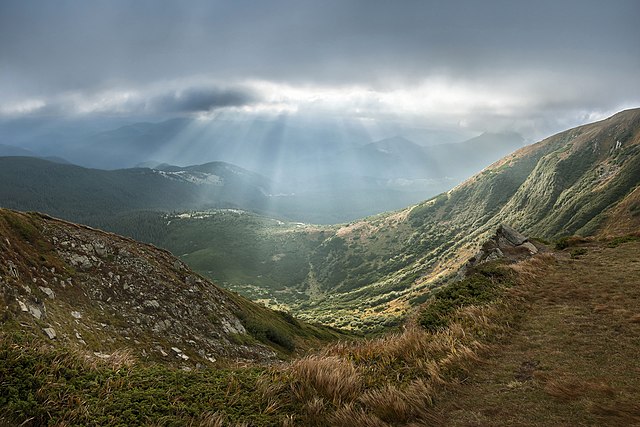
Editor’s note: Mass media news about war raises concerns about death, injury, and refuge of humans, the war on nature is rarely highlighted. But warfare always means ecocide on a large scale and wildlife and nature often take more time to recover than it is capable of. In Ukraine, 80% of wildlife is already on the brink of extinction, with the Russian aggression even more species and individual animals are getting lost. Therefore it’s a relief to have organisations like UAnimals who rescue pets and wildlife in emergency situations and raise international awareness about the destruction in nature and national parks.
The Ottawa Convention also referred to as the “Mine Ban Treaty,” prohibits the use, stockpiling, production, and transfer of anti-personnel landmines (APLs). Some key current and past producers and users of landmines, including the United States, China, India, Pakistan, and Russia, have not signed the treaty.
By John R. Platt/The Revelator
Saving Ukraine’s injured and displaced animals during wartime often means seeing the worst elements of Russian cruelty.
“When a territory is liberated, our team goes there and we speak with the people who survived the occupation,” says Olga Chevhanyuk, chief operating officer of UAnimals, Ukraine’s largest animal-rights organization. “And each time we hear that when the Russians entered the town, they started shooting animals for fun, starting with dogs just walking the streets and ending with huge farms and shelters. Sometimes it’s probably a matter of manipulation, getting people scared. But mostly it’s no reason at all, just because they can.”
Originally founded to oppose inhumane conditions in circuses, the nonprofit UAnimals has shifted its mission to rescuing and caring for domestic animals and wildlife devastated by Russian aggression.
Working with local volunteers and shelters, they’ve helped tens of thousands of animals since the war began a year ago, including dogs and cats, horses, deer, swans, birds of prey and bats — even large predators like bears. In January alone they rescued more than 9,600 animals, provided food and medicine to thousands more, rebuilt shelters, and helped fund operations throughout the country.
They’ve also found themselves purchasing supplies not traditionally used in animal rescues.
“Before the war, you never think of buying helmets for your team,” Chevhanyuk says.
And then there’s the human toll: The nonprofit has contracted with psychologists to provide on-demand assistance to its team in the field. “So now they can have a session with the psychologist when they’re overwhelmed,” she says.
But this is all about saving more than individual animal lives and human minds. It’s about saving the soul of a country.
UAnimals has started calling the Russian war an ecocide — the deliberate destruction of the natural environment.
“Nowadays 20% of Ukraine’s nature conservation areas are affected by war,” Chevhanyuk says. “Russians occupy eight national reserves and 12 national parks, and some of the national parks are land-mined. Holy Mountains National Park is 80% destroyed. Some of them are destroyed 100%, meaning there are no plants, no animals, and no buildings which people use to heal animals. The land is littered with remains of destroyed objects, like tons of oil and burned products.”
Landmines are among the worst problems. They kill humans and animals indiscriminately, start fires, and will take years to mitigate. About 62,000 square miles of Ukraine may be contaminated with landmines. “This is greater than the size of Illinois,” according to information provided by a U.S. State Department official. “The United States is investing $91.5 million over the coming year to help the government of Ukraine address the urgent humanitarian challenges posed by explosive remnants of war created by Russia’s invasion.”
Cleaning up the pollution will require even more funding and effort. The war has caused at least $37 billion in environmental damage, a Ukrainian NGO said in November.
UAnimals predicts it could take more than a decade to repair the damage, but Ukraine’s wildlife doesn’t have that much time. “More than 80 species of animals in our country are on the verge of extinction and may completely cease to exist due to Russian aggression,” Chevhanyuk says. “Some of them are the steppe eagle, black stork, brown bear, Eurasian lynx, barn owl and eared hedgehog.”
While many of these species also exist in other countries, Chevhanyuk says wildlife has been an important element of Ukrainian folksongs, art and symbology — the very fabric of its culture — for centuries. “Being humane and treating animals as something really important and equal — this is one of the things which differs us a lot from Russians. And that’s, I believe, a part of our future victory.”
UAnimals continues to ramp up its fundraising and recovery efforts while expanding its network of shelters outside the country — a necessary step, as Ukrainian shelters and reserves are rapidly filling to capacity with animals too wounded ever to be released back into the wild.
“We have big shelters for bears, for example,” Chevhanyuk says, “but they are already full. I’m afraid that if something happens, we’ll need to bring these animals abroad. So we are very grateful to all our partners in different countries because there’s a big need right now.”
The organization is also tapping back into its activist roots to bring international attention to conditions in Ukraine. In February they organized Stop Ecocide Ukraine rallies in four U.S. cities — Atlanta, Austin, New York and San Antonio — that each attracted hundreds of people.
In a way, this is a return to form. “We used to create huge animal-rights marches in 30 Ukrainian cities every September,” Chevhanyuk says. “But since the war started, we are more focused on the emergency.”
And the international community has started to take notice. Last month the Parliamentary Assembly of the Council of Europe passed a resolution to “build and consolidate a legal framework for the enhanced protection of the environment in armed conflicts” — steps that support establishing ecocide as a new international crime.
“From a legal perspective, this is really encouraging,” says Jojo Mehta, cofounder and executive director of Stop Ecocide International, “because if you put severe harm to the living world on the same level as severe harm to people, if you say ecocide is as bad, wrong and dangerous as genocide, you’re creating a mental rebalance.”
It could still take years for ecocide to become international law. Meanwhile, the destruction of Ukraine continues, as do recovery efforts.
“If our team knows there is an animal to rescue,” Chevhanyuk says, “they will go in.”
More Information here: UAnimals
This article is published under CC BY-NC-SA
Photo by Balkhovitin/Wikimedia Commons under CC BY-NC-SA